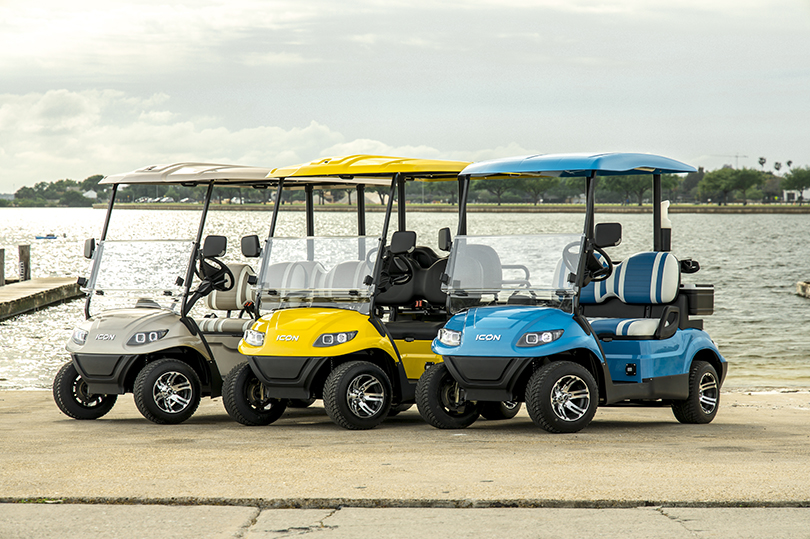
Its worth is predicted to grow to $14.4 billion by 2027.
According to the new market research report “Low-Speed Vehicle Market by Type (Commercial Turf & Industrial Utility Vehicle, Golf Cart, and Personal Mobility Vehicle), Power Output (<8 kW, 8-15 kW, and >15 kW), Propulsion (Diesel, Electric, and Gasoline), Application and Region – Forecast to 2027”, published by MarketsandMarkets, the Low-Speed Vehicle Market is projected to grow from $8.9 billion in 2021 to $14.4 billion by 2027, at a CAGR of 8.2%. Development of fail-safe electronic and electrical components and cost reduction and improved energy density of EV batteries would create growth opportunities for the Low-Speed Vehicle Market.
By battery type, the lithium-ion segment is estimated to account for the major market share in 2021.
Due to stringent emission standards across the world, coupled with relatively lower operating costs of electric LSVs, there is a shifting preference toward electrically driven LSVs. As these vehicles are intended for short distances, the electric drivetrain serves the purpose of travel and fulfills the power requirement. Approximately 60% of the total LSVs are electrically driven. North America is projected to be the largest market due to the wide acceptance of LSVs, high number of charging stations, and government support. Thus, the adoption and use of lithium-ion batteries can help reduce vehicle running and maintenance costs. This will lead to a strong pathway for production of lithium-ion electric low-speed vehicles during the forecasted period.
The golf courses segment to dominate the application type segment.
According to the National Golf Foundation (NGF) records of 2021, around 82% of the world’s countries have golf courses, totaling more than 38,000.
The report also says that around 78% of the total golf courses are located in the US, Japan, Canada, England, Australia, Germany, France, the Republic of Korea, Sweden, and Scotland. The US accounted for 42% of the total golf courses of the world.
As per Golf Datatech and the NGF, 2020 saw an increase of 13.9% in total rounds played over 2019. As per the records of NGF, there is a nearly 44% increase in the numbers from 2006 to 2019. Also, as per ASIAN Golf, nearly 5,000 golf courses were developed in Asia by March 2020, of which 196 were officially registered in India. While the closing of golf courses has steadily outpaced openings, there are still ongoing developments in the North American market, with 133 projects underway. Also, Europe holds the second largest position in the number of golf courses, which amounts to more than 8,700. This high number of golf courses in Europe is due to the presence of various organizations that support golf in many European countries; they continually strive to improve the golf business in the region.
Thus, the increase and development of golf courses will drive the demand for golf carts and turf utility vehicles.
North America is estimated to be the dominant regional market. The US, with higher demand for LSVs in golf courses and personal mobility, was the largest country-level market for low-speed vehicles globally in 2021. Moreover, higher demand for low-speed vehicles from other application areas, including hotels and resorts, airports, and industrial facilities, is expected to drive the market growth in the region. Continuous product innovations by leading regional LSV manufacturers, including Textron (US), Deere & Company (US), The Toro Company (US), and Club Car (US), coupled with government policies promoting the development and demand from end use sectors, are further boosting the market growth in the region.
Furthermore, golf adoption has seen rapid growth in the recent past, especially after COVID-19, as for all of 2020, play increased 13.9% compared to 2019. Moreover, The National Golf Foundation recently reported that the total number of rounds of golf played in the US will surpass last year’s total by 4% to 5%. This growth in registration and play in the golf sector is expected to fuel the demand for golf carts and commercial turf utility vehicles across North America during the forecast period.
Additionally, shifting focus of tourists toward luxury experiences, especially in the hospitality sector, is further expected to boost LSV sales in North America. To deliver experiences to the tourists which sync with their expectorations, hotels and resorts are showcasing low-speed vehicles in their featured offerings. The growing demand for LSVs in gated communities, collages, and theme parks for short-distance commute due to their low operational cost is further expected to drive the LSV demand during the forecast period.
Key manufacturers are focusing on product launches for market expansion, R&D, and product advancement to keep up with the changing needs of passengers.
In January, Yamaha launched the Drive2 Powertrain AC Lithium. The new Lithium-ion-powered golf car is with Independent Rear Suspension (IRS).
Yamaha is known for offering the strongest product line of golf and utility cars in the world, and the addition of the Drive2 PowerTech with IRS model offers customers the same comfort, reliability, and performance. In June 2021, E-Z-GO announced its new vehicle, the E-Z-GO Liberty, the industry’s first vehicle to offer four forward-facing seats in a compact, golf-car-sized footprint. Powered by a high-performance, zero-maintenance Samsung SDI lithium-ion battery system, the Liberty provides a premium driving experience. In August 2021, Club Car announced the all-new integration of Club Car Connect with EzLocator, the industry leader in daily pin placement management. This new partnership enables superintendents with the ability to manage pin locations with speed and precision. At the same time, golfers will enjoy exact yardages seamlessly delivered to their Club Car golf car updated through the cloud with the new integration. In March 2021, Optimus Ride, a leading autonomous mobility service provider, and Polaris Inc announced a partnership to bring fully autonomous GEM vehicles to market. Under this joint development agreement, an exclusive line of Polaris GEM electric (LSVs will be manufactured to fully integrate Optimus Ride’s autonomous software and hardware suite direct from the factory.
The Low-Speed Vehicle Market is led by established players such as Textron Inc. (US), Yamaha Motor Co Ltd (Japan), The Toro Company (US), Deere & Company (US), Waev Inc (US), and Club Car (US). These companies adopted several strategies to gain traction in this market.












